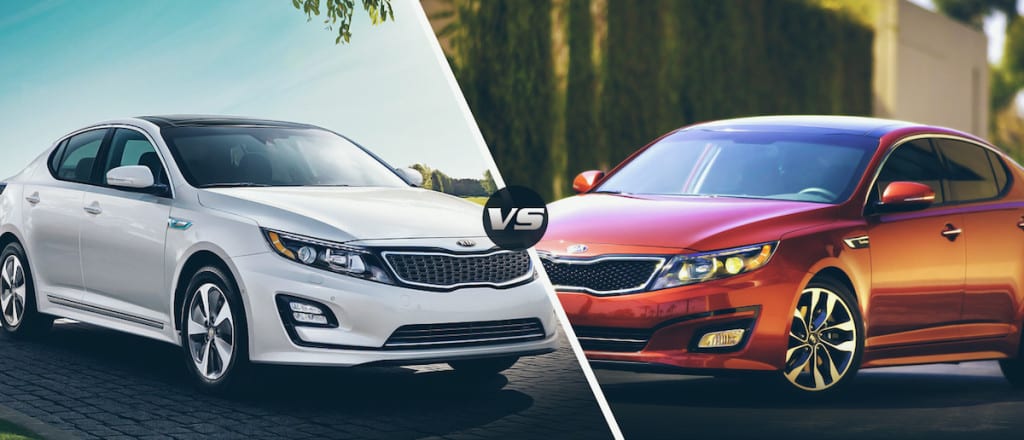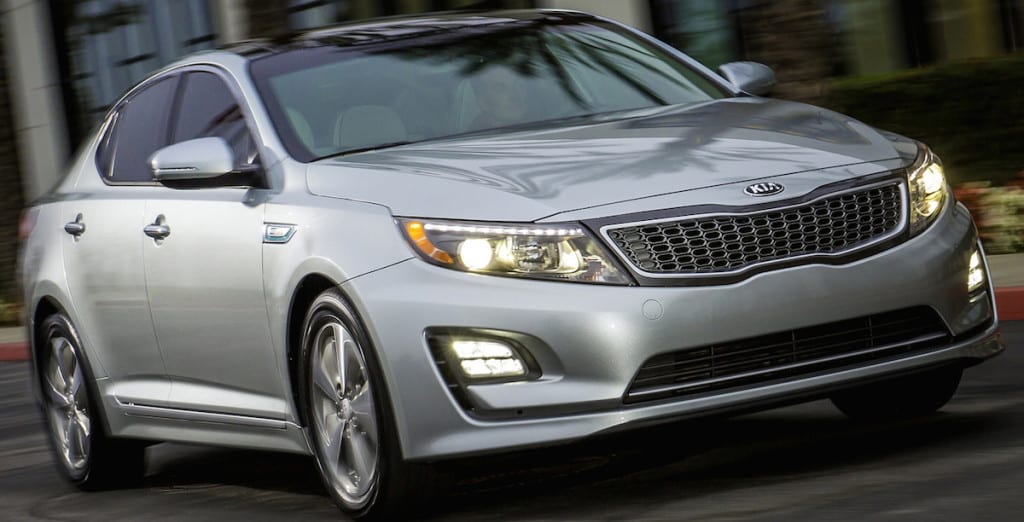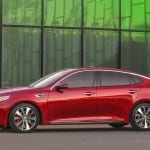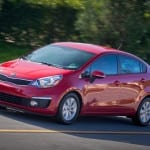Kia sells its vehicles on the motto, “The Power to Surprise.” The question begged by the new Kia Optima Hybrid is whether that surprise is good or bad. Since it launched in 2011, the Kia Optima Hybrid remains Kia’s only entry in the hybrid segment, and it looks almost exactly the same as it did when it was introduced three years ago.
Sure, we might like to think that we look just as unchanged, but when it comes to cars, cutting-edge and competitive sets the pace.
Is it worth upgrading your Kia Optima to the Kia Optima Hybrid?
While the team at your local Kia in Miami can take you through the specs of each one in great detail and even let you take them both for a comparative spin, it’s never a bad idea to educate yourself ahead of time.
So, what we have here is a quick and dirty breakdown on the clean green machine that is the 2015 Kia Optima Hybrid.
The Kia Optima Hybrid From the Ground Up
One of the principal reasons why anyone opts for a hybrid vehicle of any kind is for its impressive fuel economy, right?
Well, here we hit the first snag with the Optima Hybrid.
Equipped with a four-cylinder engine, paired to an electric motor, which is operated by a six-speed automatic transmission, the Optima generates a respectable (for a hybrid) 199 horsepower with 235 lb.-ft. of torque.
But, it only gets 36 city and 40 highway miles per gallon. Sure, that’s great compared to most non-hybrid vehicles, but in the hybrid segment, the Optima lags behind by a few miles in both city and highway estimates.
Check out the full list of the Top 10 Fuel Efficient Cars here. The Kia Optima Hybrid makes it, but just barely.
Sadly, the powertrains and braking capabilities also fall shy of segment and industry expectations.
Edmunds reports that the Kia Optima Hybrid took 8.7 seconds to move from a standstill to sixty miles per hour, which also falls below the class-established average.
Automotive reviewers who have sat behind the wheel of this machine report sluggish power and slow acceleration, with rough transitions between the powertrains, and a noticeable hesitation to pick up speed after stopping.
So say some.
Others hail the exchange from gas to electric and vice-versa as subtle and smooth, backed by more than enough power to get you where you need to go.
Between the two disparate views, most agree that the Optima Hybrid is pleasant enough to drive, feels a bit sporty, offers precise steering, and features brakes that, despite needing a few tweaks, are reminiscent of the regenerative braking present in non-hybrid vehicles.
Honestly, I would say that although it’s been around since 2011, the Kia Optima Hybrid is simply working out some growing pains, compared to other hybrid vehicles that have been on the market for far longer, and have undergone far more extensive development.
So, what does this year’s, the most current, Kia Optima Hybrid have to offer?
Optima Hybrid Trims Inspire Green Envy
Well, for starters, there are two available trim levels, the base and EX. Earlier model years offered an LX option, which has since disappeared from the lineup.
The base model is loaded with standard equipment like 16-inch alloy wheels, cruise control, automatic dual-zone climate control, height-adjustable driver seat, complete with power lumbar adjustments, heated exterior mirrors, and keyless entry and ignition.
Fun features include the refrigerated glovebox (seriously?), six-speaker sound system with satellite radio, CD player, auxiliary audio jack and iPod/USB audio interface, equipped with Bluetooth capability.
For a few extra bells and whistles, the Optima Hybrid Convenience package delivers LED running lights, eight-way power driver seat with the power lumbar adjustment, the Kia-exclusive Uvo voice-command telematics, rearview camera and a laminated windshield and front windows, which inspires a quieter cabin, a process akin to sound-proofing.
But, on the EX, drivers get all of the above in addition to the following:
- 17-inch alloy wheels
- Electronic parking brake
- Auto-dimming rearview mirrior
- LED foglights
- Xenon headlights
- Leather upholstery
- Rear climate vents
- Navigation system on 8-inch touchscreen display
- Heated and ventilated front seats
- Heated steering wheel
- Heated rear seats
- Eight-speaker Infinity sound system and HD radio
- Driver memory settings
Boost those features even further via the available Technology package, which comes with safety enhancements like rear parking sensors, rear cross-traffic alert, and blind-spot monitoring, and adds a panoramic sunroof.
The EX has one more package option, the White Interior. Opting for the White Interior gets you everything in the Technology package, in addition to white leather upholstery, set off by black piping and cabin accents.
Ooh la la…
The Kia Optima Hybrid From the Inside, Out
Those who have reviewed the Optima Hybrid from the standpoint (sitpoint?) of a passenger, hail the hybrid as being roomy, yet cozy and comfy. However, the backseat headroom is somewhat compromised because the roof slopes downwards, and the trunk leaves some space to be desired, measuring a meager 10.8 cubic feet.
However, the cabin is rife with high-end materials and details, making the Optima feel a good bit swankier than it actually is. Hey, I don’t mind pretending.
So, is it worth upgrading from the Kia Optima to the Kia Optima Hybrid?
Considering some of the aforementioned features, there are plenty of reasons to opt for the upgrade.
Infotainment is a cinch and includes satellite radio, as well as Bluetooth, supported by USB and auxiliary jacks.
The Optima Hybrid starts at the push of a button, and the inner environment is operated by dual-zone automatic climate control, with the addition of a cooled glove box.
If you want to fancy up your Optima Hybrid, check out the available leather upholstery, heated front and rear seats, complementary heated steering wheel, a cooled driver’s seat.
Other options, blending fun and convenience are available. For instance, the carbon footprint-conscious music lover will get down with Kia’s Infinity audio system, while those adventurous types will appreciate Kia’s voice-activated UVO infotainment and navigation capabilities.
And who doesn’t love a panoramic sunroof? Better a breeze, than air conditioning when it comes to the environmentally-concerned, right?
Safety is enhanced by the available rear parking sensors, rearview camera with rear cross traffic alert, blind spot monitoring, and power-folding side mirrors.
Priced to start at $21,690, the 2015 Kia Optima boasts a more powerful engine and its higher torque makes it more effective at transmitting that power. However, it’s good to keep in mind that a more powerful engine often equals an increased insurance premium.
When it comes to the 2015 Kia Hybrid Optima, the base price begins at $25,990. While it’s certainly not as powerful as its non-hybrid sibling, it shares the same safety ratings and offers just as many features for fun, convenience, and safety.
The choice here comes to down driving needs and personal preference, in this case, with respect to the environment and social consciousness, not to mention pennies.
If you really like the Optima models, but want to save a few bucks at the pump, definitely give the Optima Hybrid a try. You’ll make far fewer stops for fill ups, which makes for a more convenient ride, particularly if you’re looking for a commuter vehicle and don’t have any upcoming plans for long-range driving.
With matching warranties, the deals are fairly similar between the two.
Unlike surprises, you get full control over this decision.







